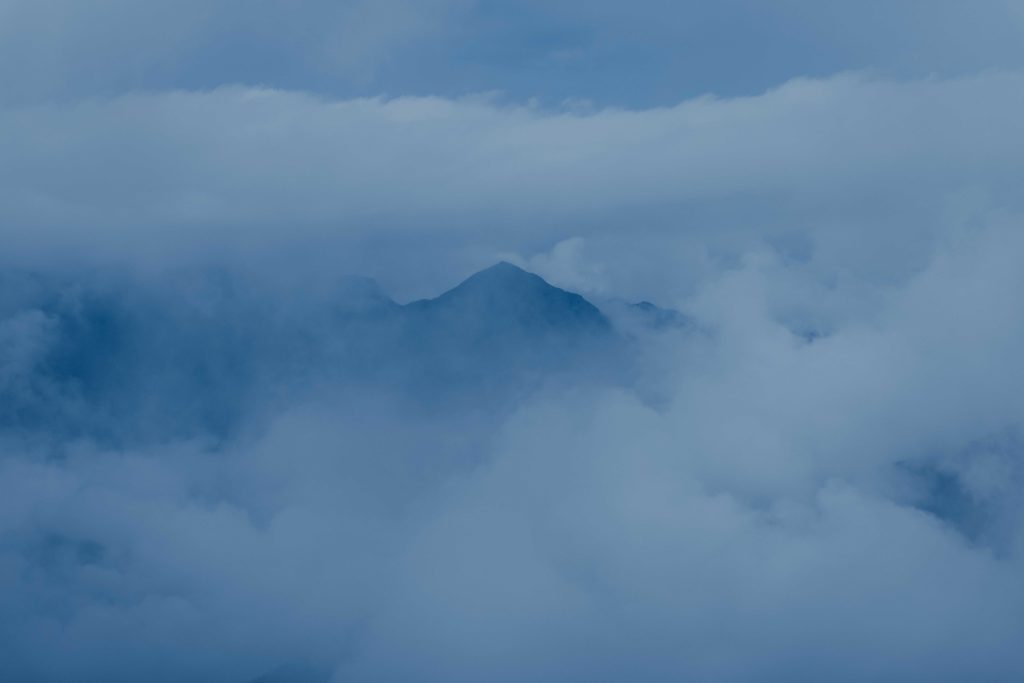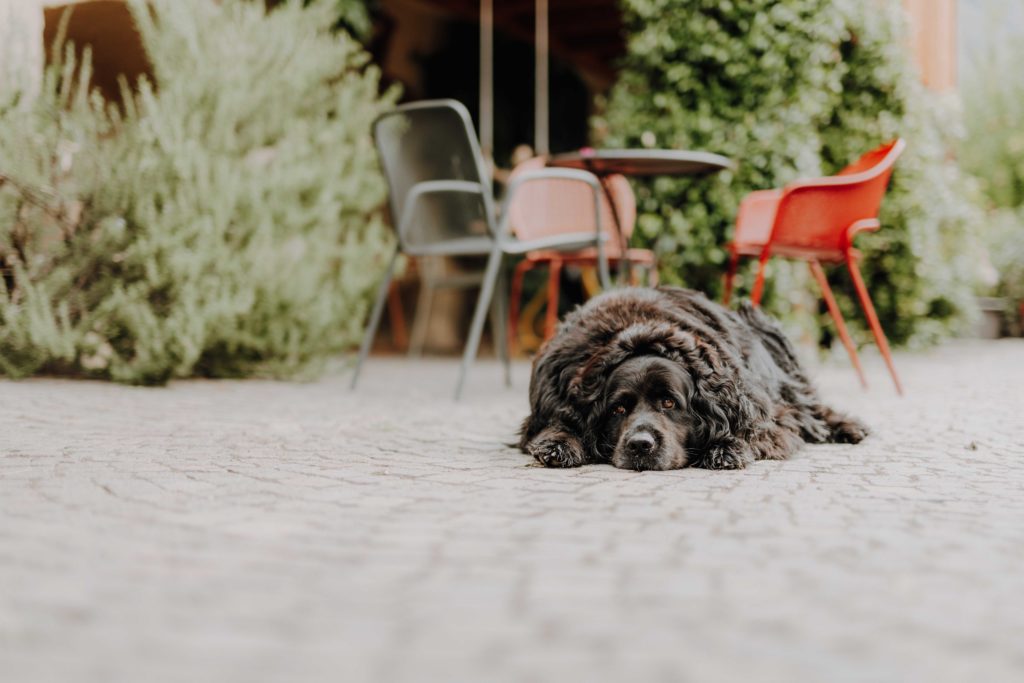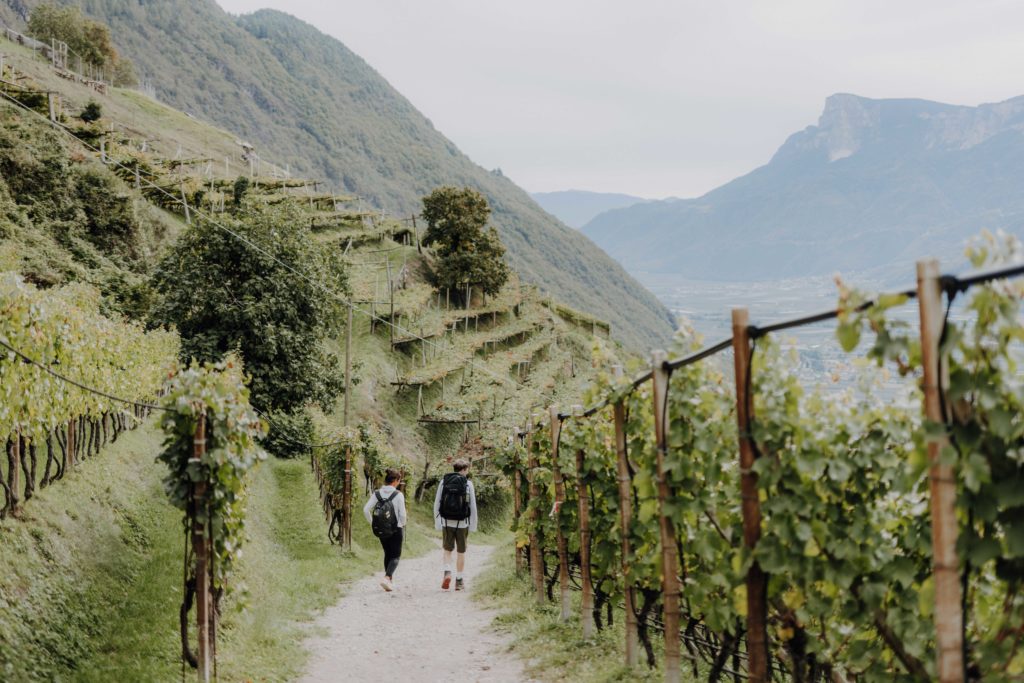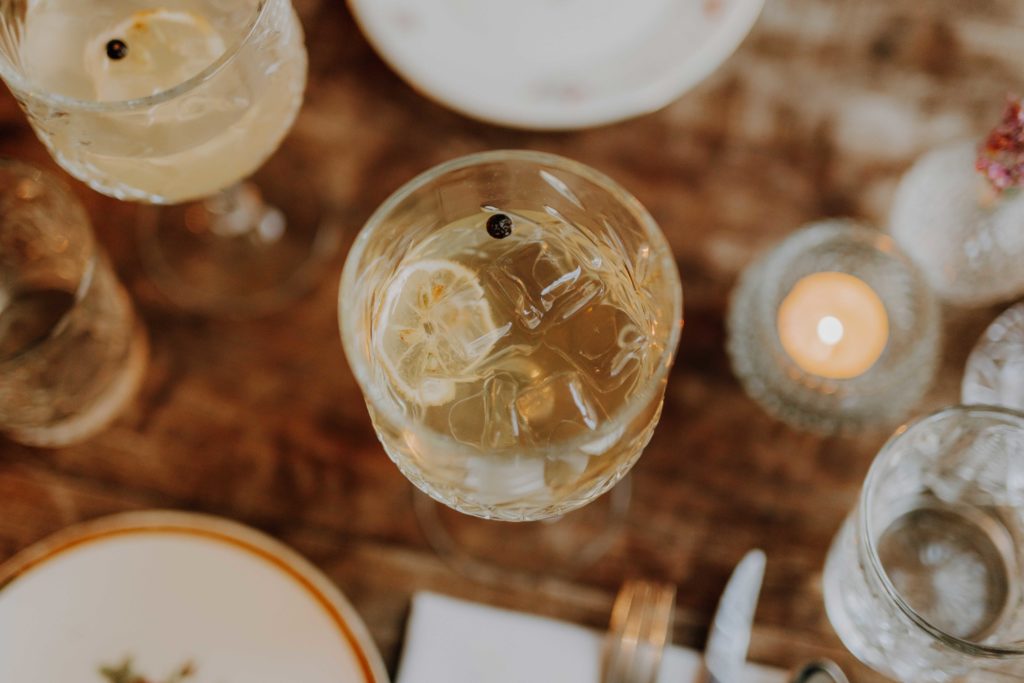(Werbung/advertisement as I was invited by Lana Tourism)
As the leaves slowly began to turn and the air had already grown a wee bit cooler, we visited Lana region for the second time this year. We got up to so, so many things (well mostly eating our bodyweight in good food), it would take three journal entries to cover it all. To give you a feeling of early Autumn in Lana, here are some things we did and loved:
Witnessing the apple harvest
The branches were heavy with apples, ripe and red and ready to be picked. Their sweet scent was filling the air around us as we strolled between endless rows of apple trees. Lana is the oldest and largest apple-growing community in South Tyrol – 700.000 tonnes of apples are harvested in Lana per year. So chances are, if you live in Europe, that those Italian apples in your supermarket are from Lana.
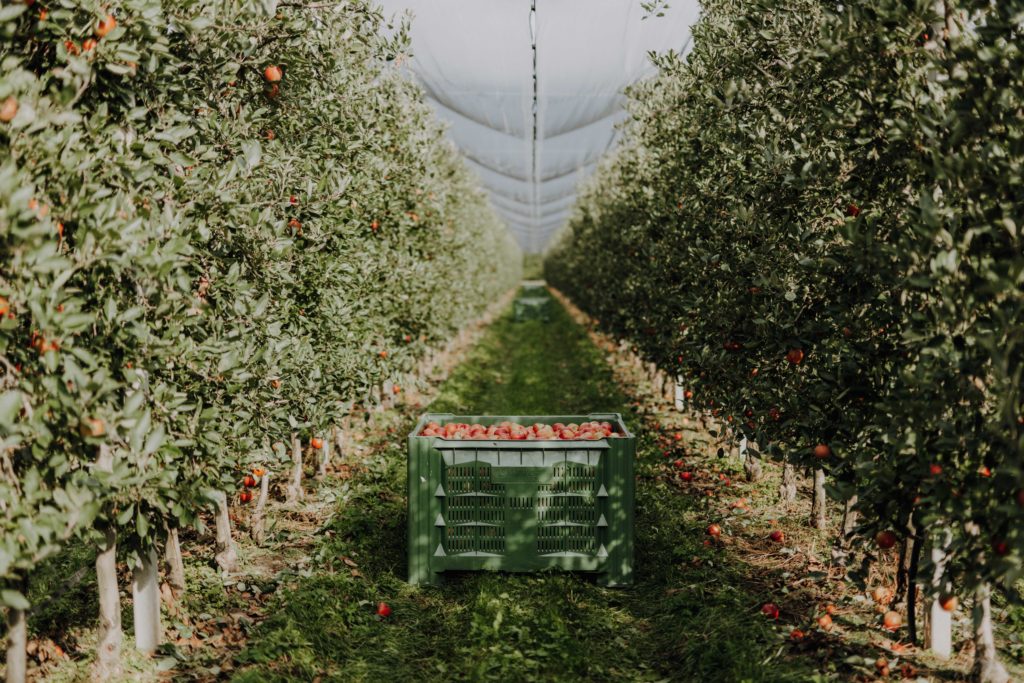
We got to spend one morning with the lovely people of Vettererhof and learned so many things about their work in the orchard. Their fruit pickers alone harvest 500.000 kg a season and if you’re a good and quick worker you can pick up to 10.800 apples a day. A day! Just let that sink in.

Aside from hearing about the harvest, we got to try some fresh fruit as well. We left the orchard and drove back to Vettererhof, which is in the center of Lana, where caskets filled with delicious apples were waiting to be sampled. My favourite? Definitely the „Weirouge“ with its bright red flesh.
Going on a road bike tour
Road cycling has quickly become my favourite sport, so I really wanted Philipp and me to tackle at least one mountain pass while we were in Lana. Our pass of choice? The Passo della Mendola. Do get there we first took a bike shuttle from Lana up to the top of Passo Palade, gratefully ridding us of one ascent.
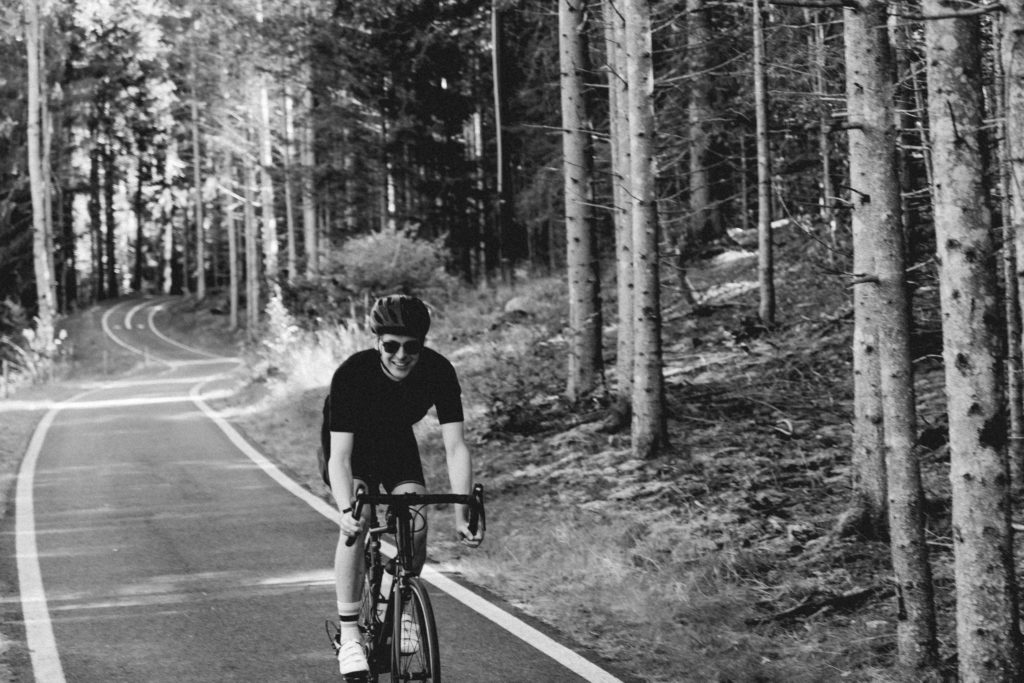
As we reached the top at 1.518m and got off the bus, the crips mountain air filled our lungs and we were excited to embark on our tour.
We mounted our bikes and set off, taking in the stunning scenery as we zoomed down towards a town called Fondo (982m). There we left the road and followed a specially built cycle track that lead through the woods. It was perfect. The track got gradually steeper and the climb was tough but we were determined to reach the top. And just like that, we exited the forest and found ourselves in busy Mendola at 1.363m. There were many cars, many cyclists who’d apparently all used the classic road as we hadn’t met any others on our forest trail.
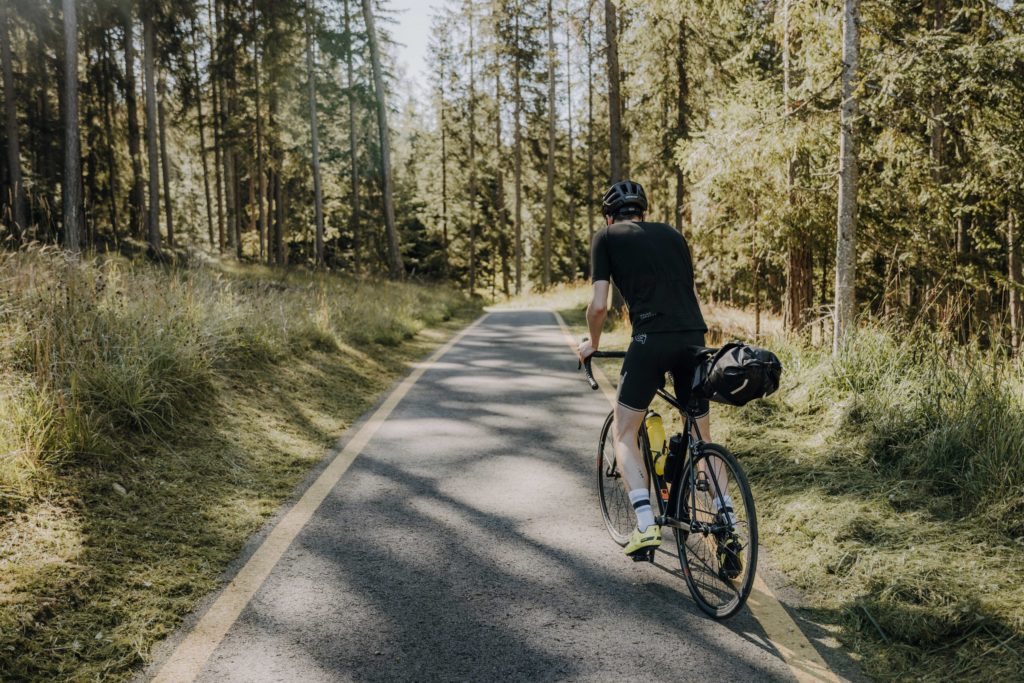
We paused to catch our breath and then started our descent towards Kaltern. The wind was rushing through our hair as we picked up speed. The descent was exhilarating, and we couldn’t help but feel a sense of freedom and joy as we flew down the mountain.
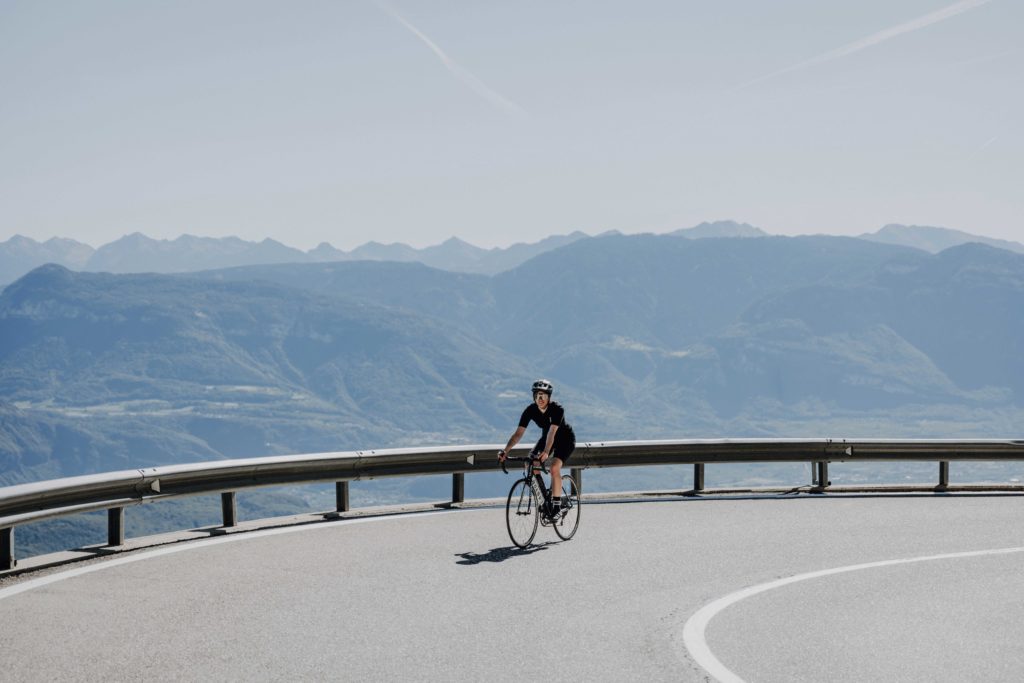
As we approached Kaltern (425m), we stopped for a well-deserved rest and a quick bite to eat. Refreshed and reenergized, we set off on the final leg of our journey back to Lana.
The whole trip was about 70km long – super challenging but also super rewarding and I’d do it again in a heartbeat.
Breakfast at Runstner Hof Café
What better way to start your day than with a really good breakfast? Breakfast at Runstner Hof Café in Gargazzone is not only really good it is also really different. It’s of the buffet type, but it’s not laden with a million things. The family-run cafe focuses on homemade and local ingredients, prepared in such a beautiful, almost artistic way, it’s almost too good to eat.

The whole atmosphere of the place is so very quirky – with a collection of old plates and cups, and a very rustic yet romantic wooden interior. The café doesn’t have hundreds of tables, so make sure to reserve a spot and if you have any dietary needs, tell them beforehand and they’re happy to prepare something special for you. Their homemade oat yoghurt for example was ah-mazing!
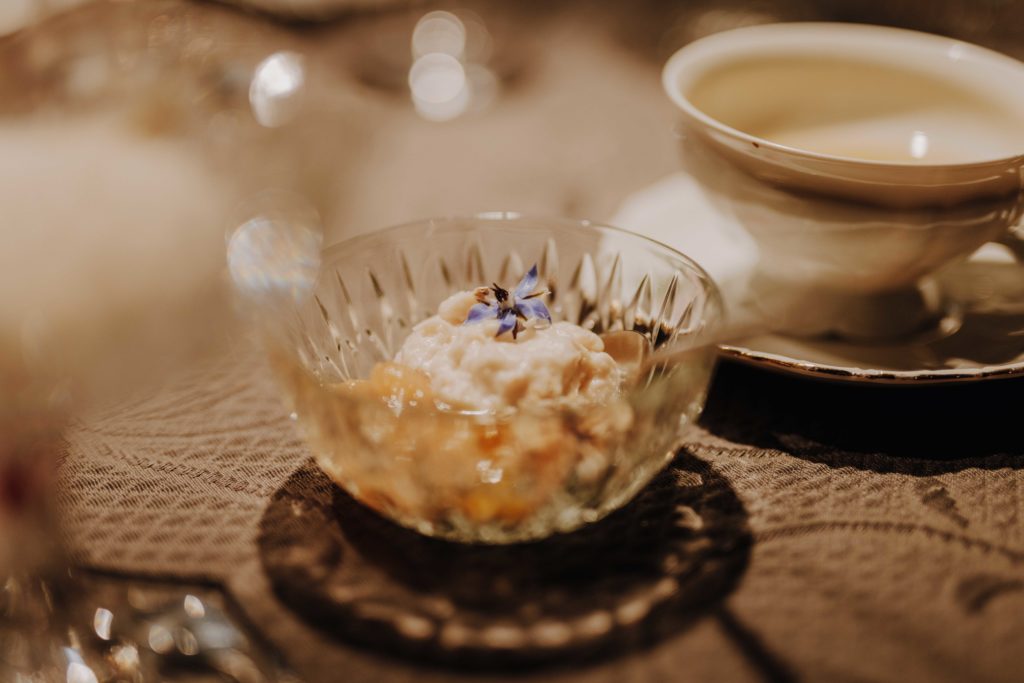
Best thing about the Runstner Hof though? Their dog Timmy!
Visiting a chestnut grove
Chestnuts (or „Keschtn“ as they say in South Tyrol) and Autumn in Lana go together like peanut butter and jam. I’ve never experienced such a love for chestnuts anywhere else. We might find them on our Christmas markets at home but in Lana it’s a real passion throughout the last months of the year.

We were lucky enough to visit a working chestnut grove on the slopes of the mountain ridge opposite Lana. Here, 200 trees grow which the Laimer family tends to all year round. But the busiest time is October when the chestnuts are ripe.
Chestnuts are a type of fruit that grows in a spiny casing called a burr. When the nuts are ripe, the burrs open up, allowing the nuts to fall to the ground, where they have to be picked up.
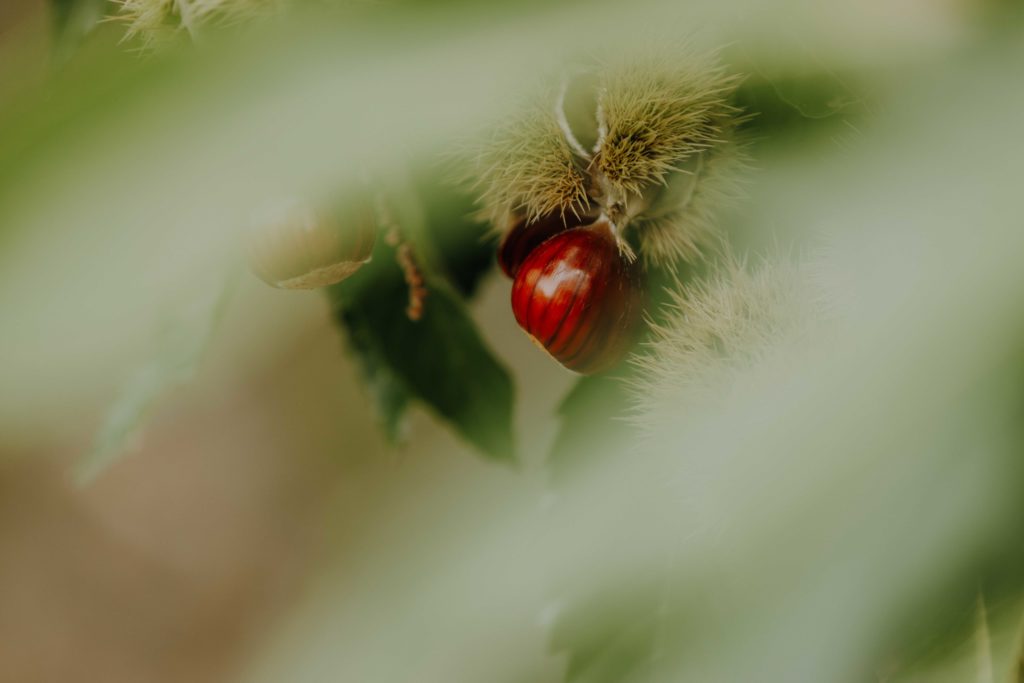
While a lot of farming is almost fully automatic nowadays, harvesting chestnuts can only be done by hand to prevent any damage to the fruit and to preserve its natural shine.
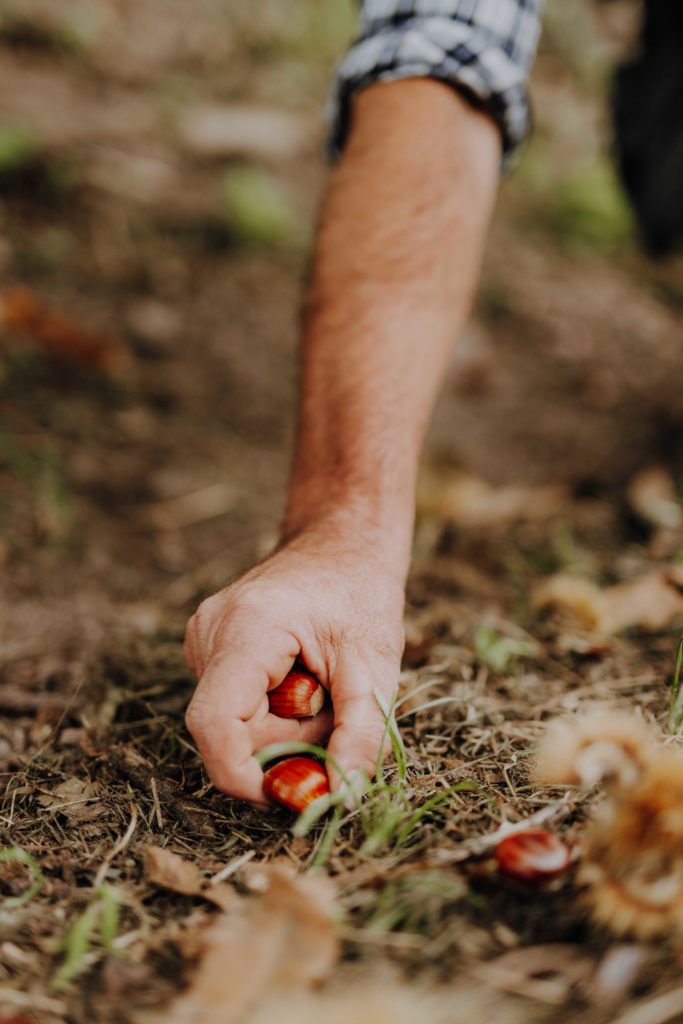
Traditionally the „Keschtn“ are roasted over an open fire and then devoured straight away but they also make for pretty neat ingredients for all sorts of delicacies, like panettone, beer or even gin.
The „Höfeweg“ trail
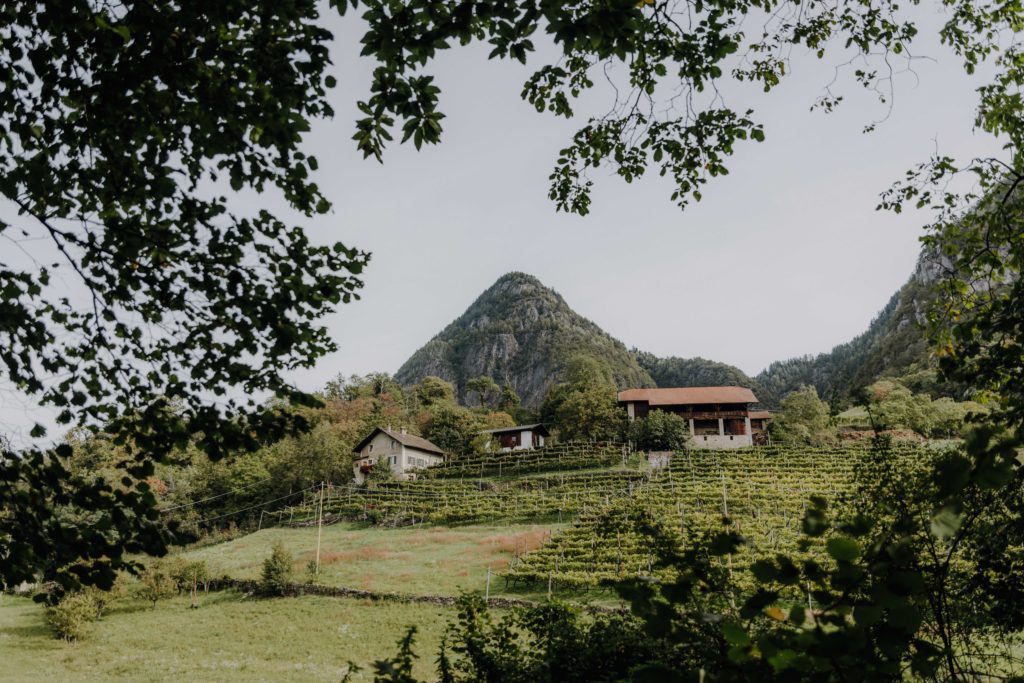
If you’re not the mountain-climbing type but still want to get a bit of exercise in, the „Höfeweg“ in Postal is for you. The track first leads through forests and even though it’s a fairly easy hike, you still need to be prepared for some steep bits, but with decent hiking boots you should be sweet. At some point we leave the forest and step onto a road that meanders its way along the mountainside. We are now high above Lana, visible on the other side of the Adige Valley.
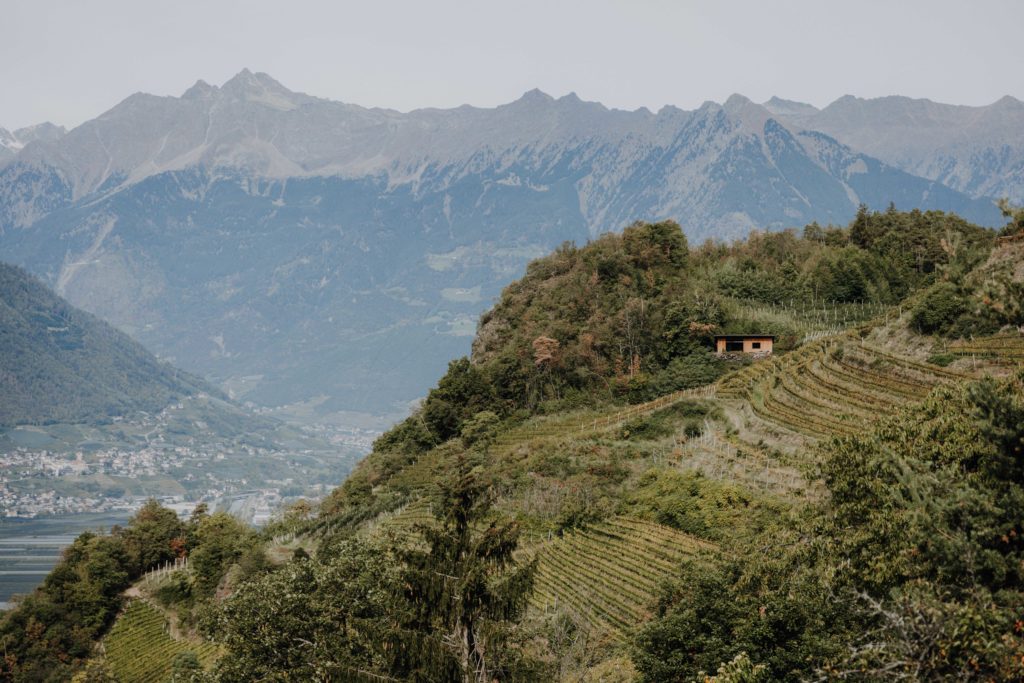
The trail is called „Höfeweg“ (Höfe means farms) because it passes a few old mountain farms that welcome you with drinks and food. Like the Wiesler Hof – a farm that was first mentioned in 1369. That is where we stopped to just sit and relax, and to enjoy the views and the hearty food.

A wee advice: the farms and their restaurants aren’t open Mondays and Tuesdays, plus they recommend you book a table if you want to sink your teeth into their scrumptious food. It can get quite busy up there, although a lot of people drive up by car so the hiking trails are never too crowded.
Well fed, we then headed back down towards Postal, past farmland, past vineyards and orchards, enjoying the views along the way until the trees fully engulfed us again and we smelled the fresh forest air.
Learning about viticulture
I might be romanticising it a lot, but being a winegrower always sounds wonderful: you’re outside everyday, working with the flow of nature, usually in the most picturesque settings. That’s why I love visiting different vineyards. I’m definitely no wine expert – heck I’m far from being one. When I go to the supermarket it’s usually a beautiful label that makes me want to buy a bottle…
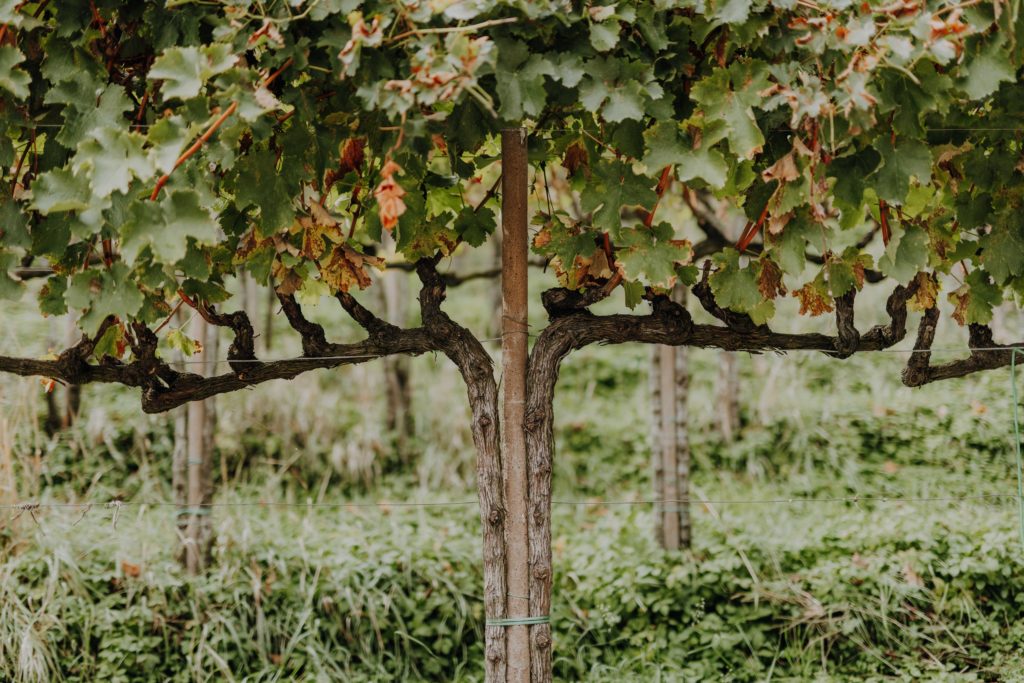
One afternoon we headed up to Weingut Oberstein in Tscherms to hear about their approach to viticulture. Weingut Oberstein is located at the dividing line of the Eurasian and African tectonic plates. Through plate shifts the hard granite below the surface was broken up and crushed, forming a soil rich in minerals. That soil is what makes their wines special, tells us Joachim Wolf who grew up on the vineyard and is now running it with his family.
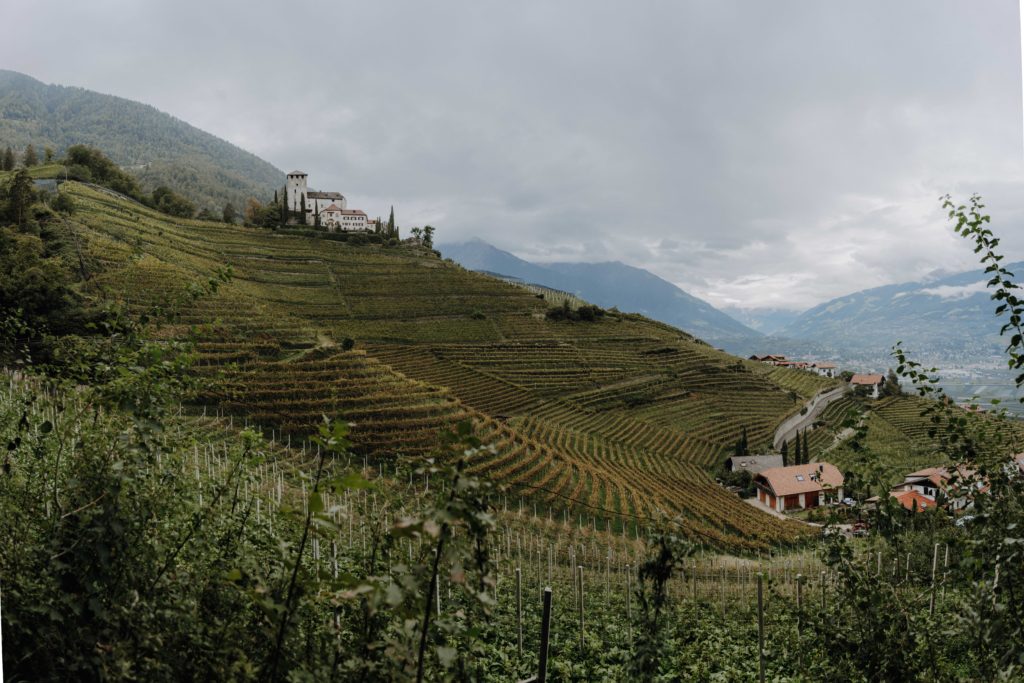
The grapes were ripe, their colour a deep purple, hanging heavy on the vine. Most of the grapes had already been harvested, these were the last ones to be picked before the end of harvest season.

From field to bottle, the journey is a long one: Joachim believes that it takes time to make a superb vino, which is why he prefers long storage periods. And it’s got to be true, because the wine we tasted (a Sauvignon Blanc) was beautiful (plus the labels are elegant, so I’d buy a bottle).
Dinner at 1477 Reichhalter
Oh there are so, so many good restaurants in and around Lana and each and everyone of them will have you swooning over their dishes… For now, let’s stay right in the heart of Lana, where you can find 1477 Reichhalter – a restaurant with a very special feeling to it. The interior is old, yet new and their menu is familiar yet surprising, combining ingredients we all know and love in a clever way.
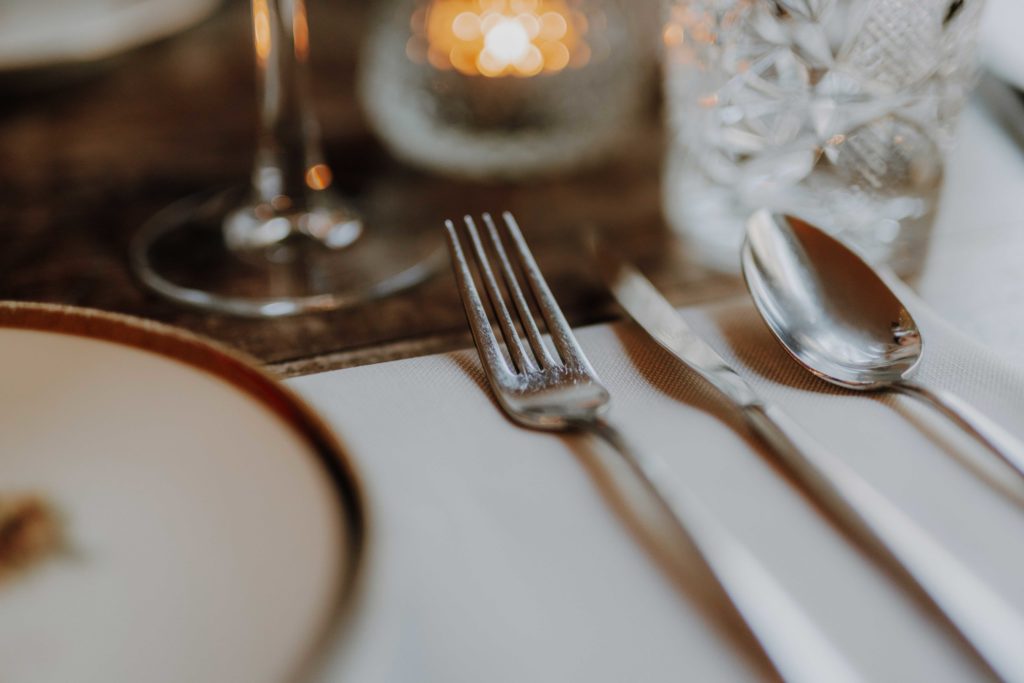
The 1477 Reichhalter will probably win you over even before you tasted the food. At least that’s what happened to me: I only had to lay eyes on the old tables made of dark wood and all the different, antique plates.

Our dinner started with an amuse-gueule (greetings from the kitchen – usually a small appetizer to make you even more excited for the remaining courses), followed by an Autumn-inspired salad topped with pears and walnuts. I don’t even know how to describe our main courses, except that my pasta dish almost made me giggle with happiness. Pasta does that to me.
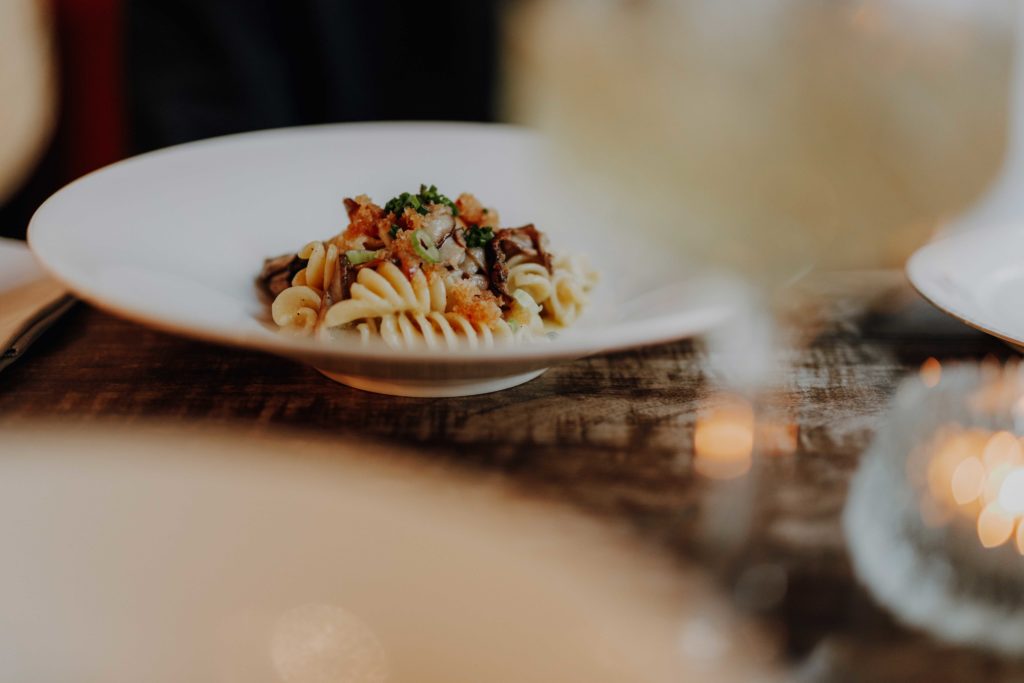
If you ever treat yourself to lunch or dinner at the 1477 Reichhalter I have one last tip for you: drink their chamomile infused aperitivo! I almost didn’t want to finish mine because I wanted the experience to last way longer!
Hiking up „Kleiner Ifinger“
Lana is a very outdoorsy place and tackling at least one hike, be it easy or hard, should definitely be on your bucket list. We opted for a sunrise hike up „Kleiner Ifinger“ – a peak sitting at 2.552m.
We started in Falzeben in complete darkness at around 5am. All around us thick clouds and fog dominated the scene but we were still very hopeful that we’d be above the clouds once we got to the top. We followed the trail which was sometimes quite hard to find, as we could only see a few meters ahead. The air was damp and cold, and we could only just make out the landscape around us in the semi-darkness.

We could feel the incline beneath our feet as we climbed higher and higher, but there was still no sign of the sun. Instead the air got even colder and soon we were wrapped in all our layers.
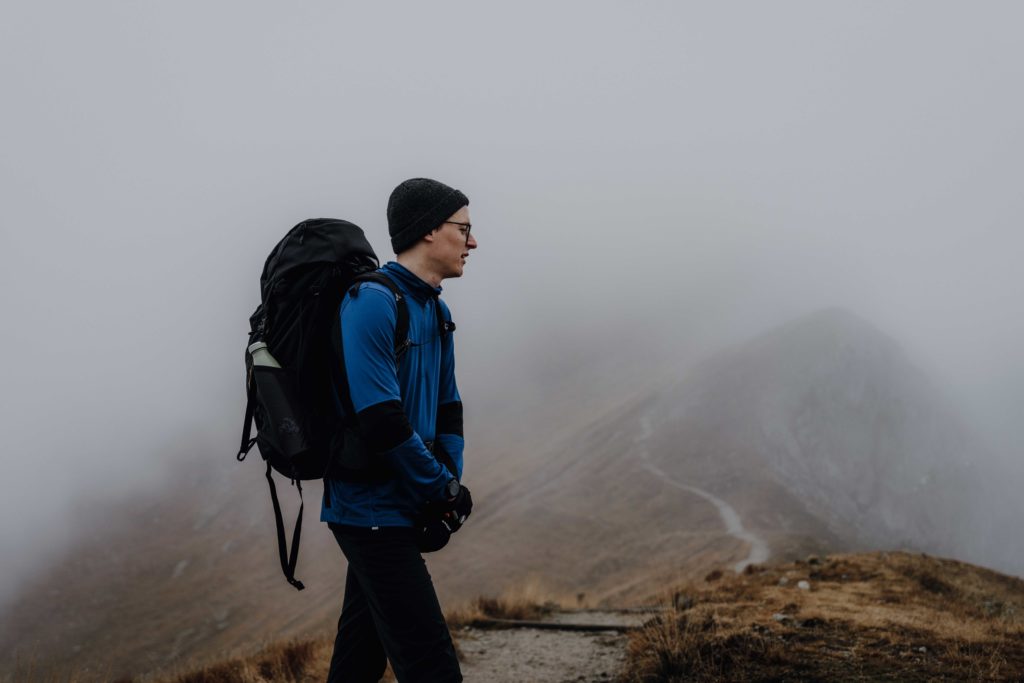
The last ascent zig-zagged its way up towards the summit. We could sense the mountain all around us, even if we couldn’t see it. As we reached the summit, we were a tad disappointed that the view was completely obscured by clouds, but we still felt a sense of accomplishment for making it to the top. We didn’t linger long, though. It was far too chilly for that. Besides, breakfast was waiting for us at Kuhleitenhütte (2.361m).

When we reached the mountain hut, there was a warm fire crackling away and the whole atmosphere was incredibly comfy – exactly what we needed after an early start. We sipped on hot fruit tea and took our time to finish our breakfast, which included way too many yummy things.
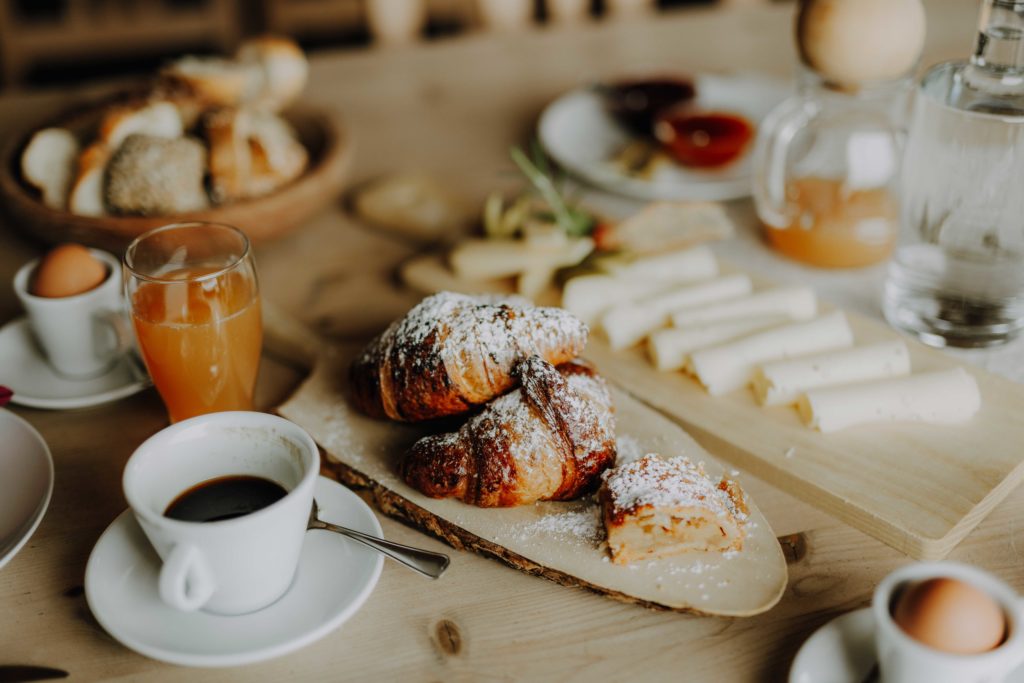
We might even have dawdled a wee bit, because the conditions outside just wouldn’t change and we weren’t that motivated to follow the muddy trail back down the mountain. But as Philipp always says, „What goes up, must come down.“
Our hotel
This time around we got to stay at hotel Jardis. It is located right in the center of Lana but in a quiet neighbourhood. Charming and cozy, the hotel offers a comfortable and relaxing stay and has some standout features, including a rejuvenating sauna and a refreshing outdoor swimming pool, which is a nice addition – especially during the warmer months.
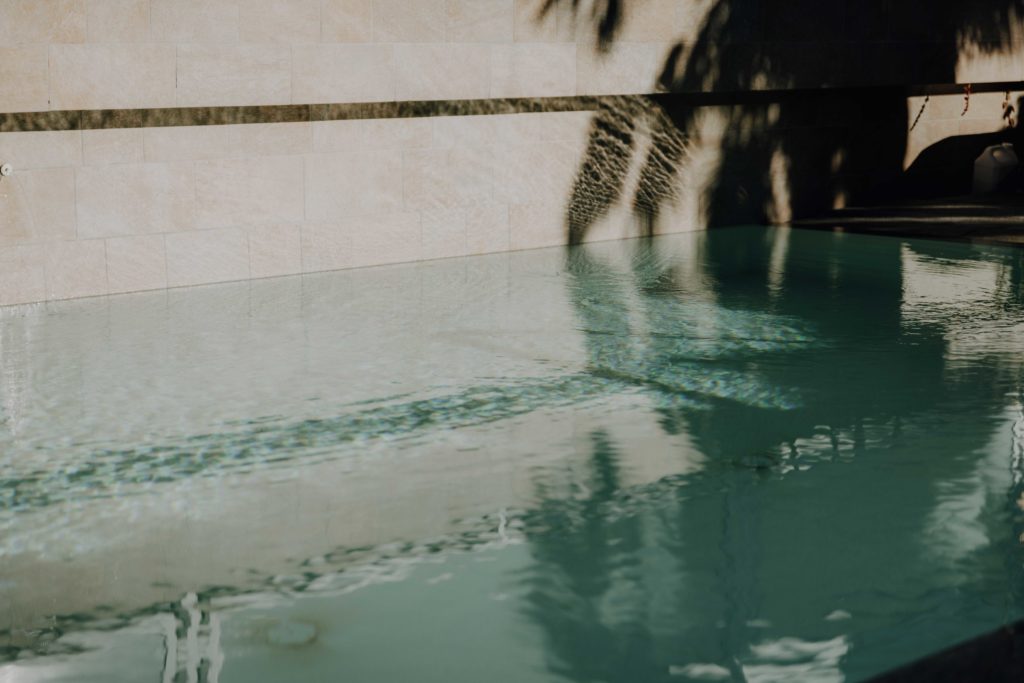
While the Jardis may not offer lunch or dinner options, it does provide a satisfying complimentary breakfast each morning to kickstart your day. During our early Autumn stay we were even able to enjoy our breakfast outside on the patio beneath the gigantic leaves of a palm tree. With its warm, welcoming atmosphere, the Jardis is great for travelers seeking a comfortable place to rest their head after a long day of sightseeing.
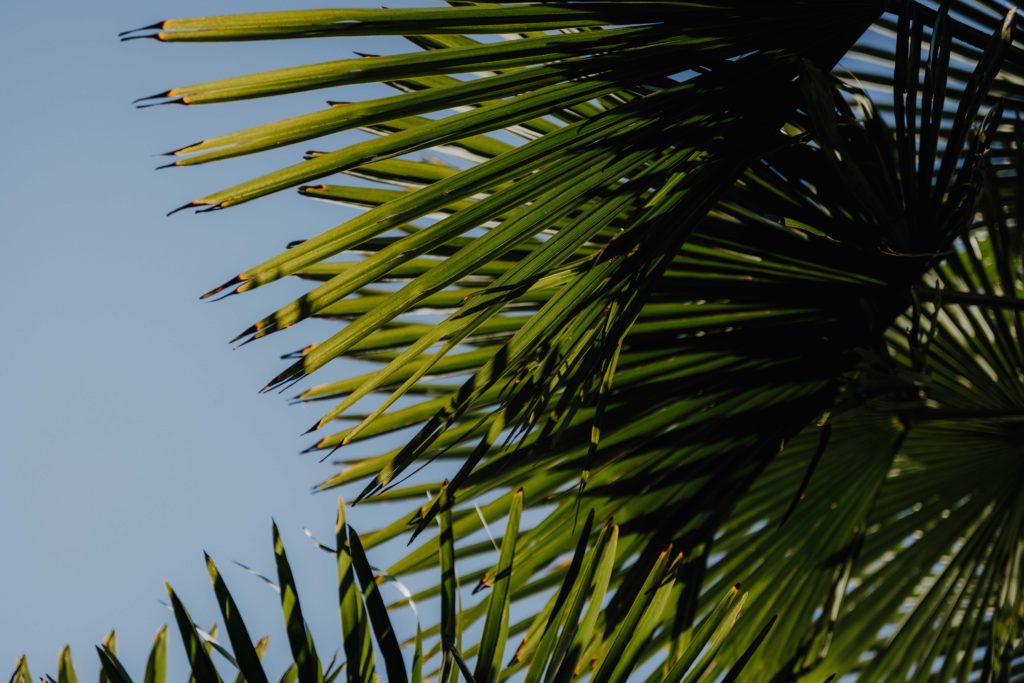
Owner Joachim is always happy to share his stories of exploring the region and has the odd inside tip at hand to make your stay in Lana even better.
A week later it was time again to say goodbye to the mountains and embark on the 10-hour-journey home. Lana had spoiled us once more with amazing weather, beautiful views and food so good, we’re taking heaps of inspiration home with us (walnuts and pears in salads, guys, walnuts and pears!).
